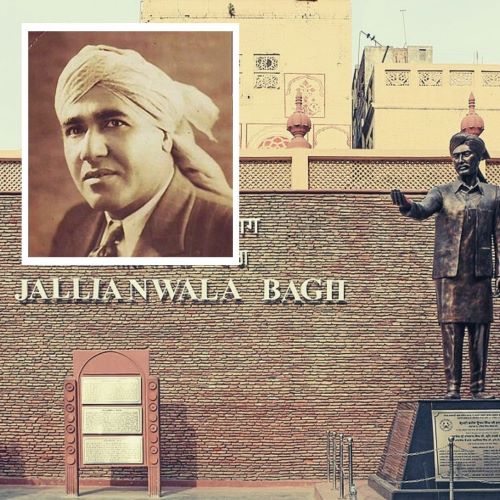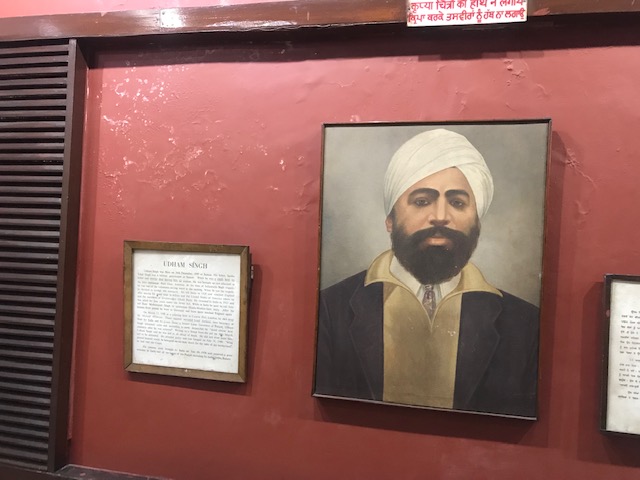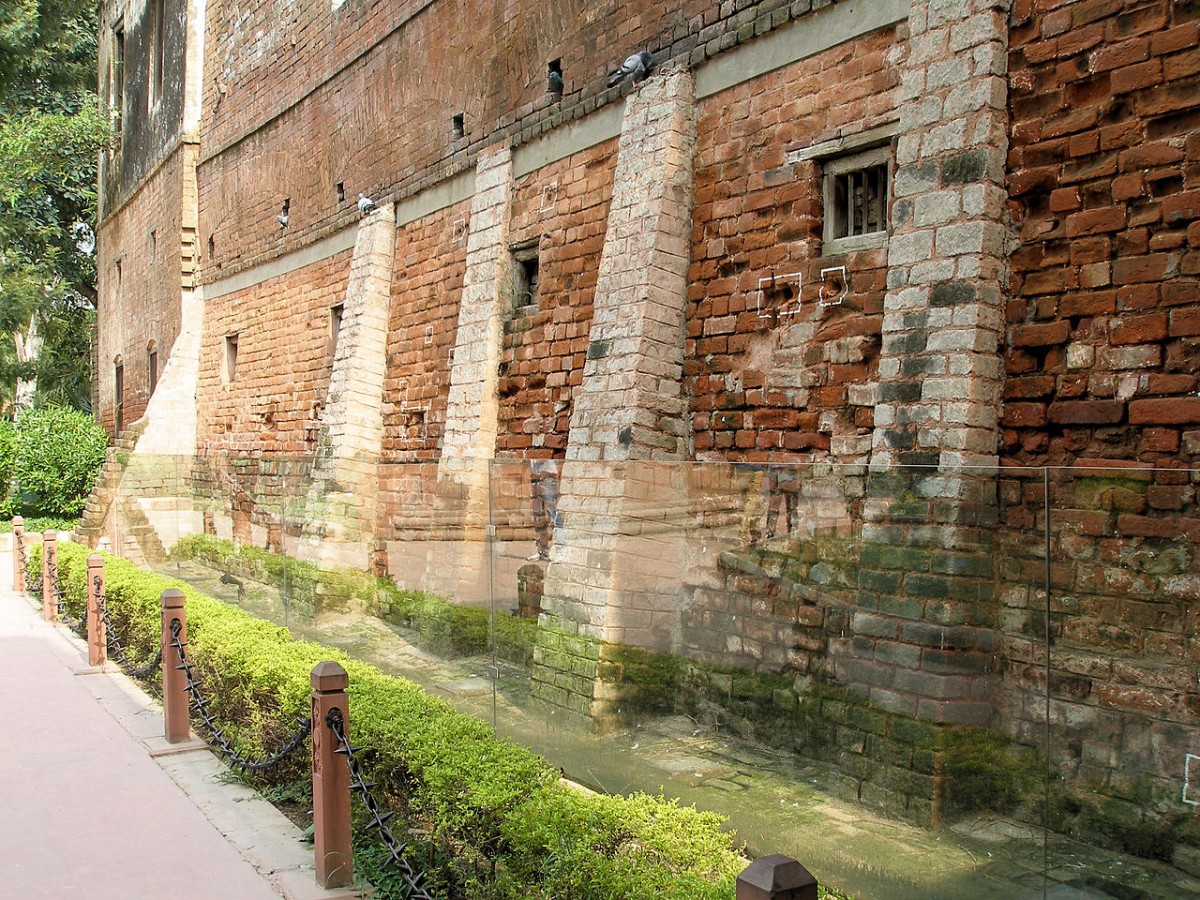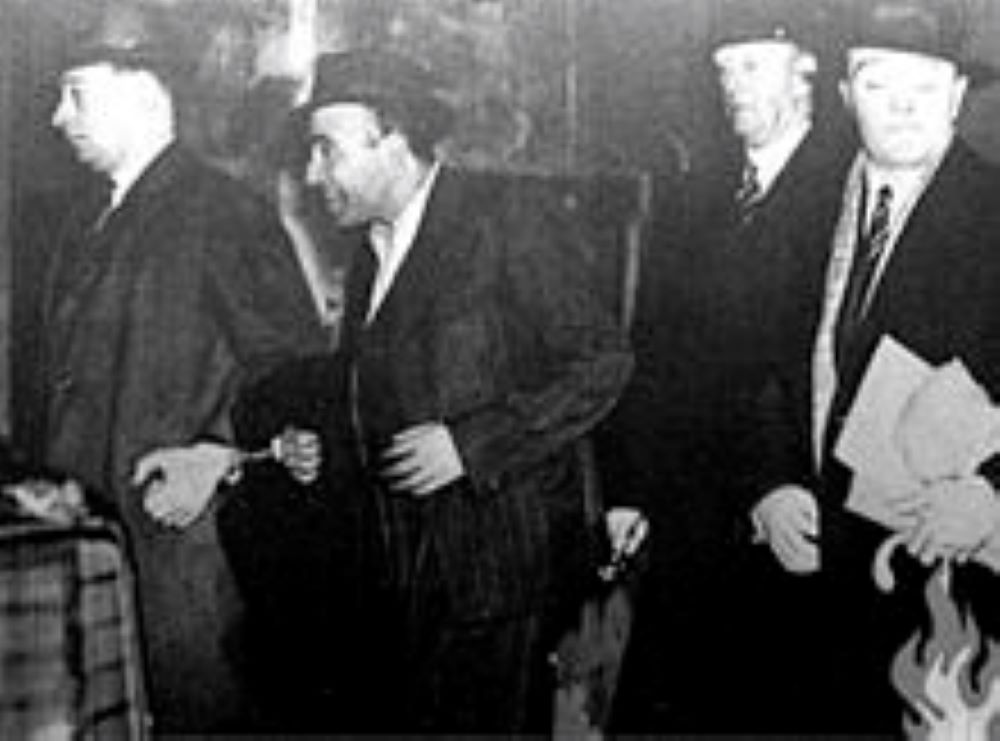
Udham Singh’s action was not simply about revenge, but a part of wider anti-colonial revolutionary politics, one inspired by socialist ideals
By Harshvardhan and Prabal Saran Agarwal
In popular culture, Udham Singh is usually known as the person who avenged the Jallianwala Bagh massacre
He is known as the “patient assassin” or the “lone assassin” who shot dead Michael O’Dwyer, the Lieutenant Governor of Punjab under whose administration the infamous Amritsar massacre took place and who later even endorsed Brigadier-General Dyer, the perpetrator of the killings.
Every year on his birth anniversary and martyrdom day, several newspaper columns pay tribute to Udham Singh by focusing on his heroic assassination of O’Dwyer in London. One article written in 2017 was titled “…ghar me ghus kar mara” (to kill someone in their own home).
In popular accounts, Udham Singh is viewed as a person solely committed to avenge the Jallianwala Bagh massacre, as if his entire life was guided by this single motive. In 2019, London-based journalist Anita Anand published a book on him titled ‘A Patient Assassin’ that followed a similar narrative. She presented Singh as a colorful, “happy go lucky” figure who bore only a personal grudge towards the British.
Undoubtedly, individuals become famous in history through their heroic acts. The name of Udham Singh, like other Indian revolutionary freedom fighters, got etched in public memory because of his heroic action. Like other annually commemorated Indian revolutionaries, Udham Singh too has been reduced to a mere caricature of his actions and emptied of his radical ideology.

Today, Udham Singh has become an icon for different communities. In Britain, he is an important part of the cultural heritage of the Sikh diaspora; in Punjab, he is eulogized as the person who avenged the Jallianwala Bagh massacre; and in recent years, owing to his background, he has also emerged as a champion of the downtrodden castes. Singh belonged to the Kamboj caste, which is categorized under the Other Backward Classes list in Punjab.
In all these imaginations, however, Udham Singh’s deed remains front and center, over-determining the interpretation of the man. But Singh’s heroic act was only the culmination of an intense ideological and political career, one that covered four continents and involved at least two remarkable organizations: the Ghadar Party and the London-based Indian Workers Association.
Beginnings
Singh was born on December 26, 1899, to a very poor family in the Sangrur district of Punjab. His birth name was Sher Singh. Harnam Kaur, his mother, died at a very young age and his father, Tehal Singh, decided to migrate to Amritsar to provide better education to his children but passed away soon after reaching there.
Singh and his brother were then raised in the Central Sikh orphanage of Putligarh but soon his brother also died. As he grew up from his tragic childhood, Singh joined the British Indian Army during the First World War as a manual labourer, serving overseas. It was after his return to India in 1919 that his life as a revolutionary began.
In the two decades of political activism that followed – activism that spanned four continents and more than 20 countries – Singh took on different names and occupations. At one point, he was known as Ude Singh; at another, Frank Brazil. His last nom de guerre was Mohammad Singh Azad, a name he considered a symbol of communal harmony and anti-colonialism. He also worked as an extra in two movies: Elephant Boy (1937), based on a story by Rudyard Kipling, and The Four Feathers (1939).
A revolutionary career
Udham Singh’s lifelong association with the Ghadar Party began in 1919 after he returned from his second stint in the British Indian Army in Mesopotamia. The British had Promised Land and financial rewards for those joining the army to serve in World War 1, but after the war ended, these promises were not fulfilled. Udham Singh, who had initially joined the army in the hope of gaining some of these benefits, felt betrayed.
After serving for two years, he had merely Rs.200 to his name. This sense of betrayal at the hands of the British, alongside anger at the Jallianwala Bagh massacre, pushed Singh towards Ghadar revolutionaries, who were circulating revolutionary literature in Punjab at the time. He quickly became one of their campaigners, distributing their revolutionary literature throughout Punjab’s villages.

It was during his time in the United States that he got deeply involved in the Ghadar movement and became one of its prominent activists
His campaigns brought him into contact with several radical nationalists like Saifuddin Kitchlew and Master Mota Singh, whom he met before going to Uganda to work on the country’s railway lines. In East Africa, his contacts with the Ghadarite revolutionaries became more intimate and mature. He again returned to India in 1922 and opened a shop in Amritsar, which became the center of his revolutionary activities. During this time, he also got in touch with the militant Babbar Akali movement and began organizing with them.
However, it was during his time in the United States that he got deeply involved in the Ghadar movement and became one of its prominent activists. Singh illegally migrated to the US in 1924 via Mexico, eventually settling in San Francisco, the epicenter of the Ghadar movement in North America. As a member of the US-based Ghadar movement, Udham Singh acquainted himself with its literature and travelled across the country on behalf of the party to recruit members and raise funds.
As scholar Navjeet Singh notes, “It seems likely that Udham Singh was sponsored by the Ghadar Party to visit [numerous cities in America] to give them a first-hand account of the Jallianwala Bagh massacre, to promote the growth of local branches of the party, and to raise funds”.
Singh spent some three years in the US, working in San Francisco, Detroit, New York, and Chicago. In addition to his involvement with the Ghadar Party, Singh also launched his own party, the Azad Party, as an offshoot of the Ghadar movement.
The party had the twin objectives of campaigning for Indian freedom and collecting funds for revolutionary groups in India. After his time in the US, Singh enlisted as a carpenter and seaman for an American shipping line under the Puerto Rican nom de guerre of “Frank Brazil” and traveled extensively throughout the Mediterranean and Europe.
During his extensive travels, he established contacts with Ghadar Party branches in Italy, Germany, Poland, Iran, Hong Kong, Japan, Malaysia, and Singapore, among others. By the time he returned to India in July 1927, Singh was firmly embedded in an international network of Ghadar revolutionaries, who had a working relationship with the Communist International.
He arrived in India with the intention of accelerating and radicalizing the anti-colonial struggle, bringing with him arms and Ghadarite propaganda. However, on 30th August 1927, he was arrested in Amritsar under the Arms Act for the possession of two revolvers, one pistol, ammunition, and copies of the prohibited paper, Ghadr-di-Gunj. Along with Ghadr-di-Gunj, other “seditious” literature was found in his possession, including copies of the banned Ghadr-di-duri, Desh Bhagat-di-Jaan (Lives of the Martyrs), and Gulami-da-Jehar (The Poison of Slavery).
Udham Singh was sentenced to five years’ imprisonment. During his interrogation, Singh reportedly said that “he had come from America to free the country from the British and fully sympathized with the Bolsheviks”.

Bhagat Singh and other revolutionaries from the Hindustan Socialist Republican Association were imprisoned in Mianwali Jail for killing J.P. Saunders and bombing the Legislative Assembly
Even in jail, Singh continued to organize by propounding Ghadarite revolutionary ideas amongst his inmates, for which he was flogged and thrown into solitary confinement. Since he was a difficult prisoner for the authorities to manage, he was transferred from one jail to another. It was in one of those jails that he met Bhagat Singh.
Bhagat Singh and other revolutionaries from the Hindustan Socialist Republican Association (HSRA) were imprisoned in Mianwali Jail for killing J.P. Saunders and bombing the Legislative Assembly. Udham Singh quickly befriended Bhagat Singh and was so captivated by his charisma that he called him his “guru” and “best friend”, and carried a photo of him in his wallet.
Bhagat Singh’s influence on Udham Singh can be gleaned from a letter the latter wrote on March 30, 1940, where he says:
“It is since 10 years when my friend [Bhagat Singh] has left me behind and I am sure after my death I will see him as he is waiting for me…it was 23rd [when they hanged Bhagat Singh] and I hope they will hang me on the same date as he was”.
In line with HSRA revolutionaries, Udham Singh too tried to use his trial as a platform to put forward his political and revolutionary ideas and undertook a forty-day-long hunger strike. Some scholars have suggested that Udham Singh’s turn to atheism was also inspired by Bhagat Singh. Later, Udham Singh too would shave his beard and cut his hair – both important symbols of the Sikh faith.
Two years after being released from prison in 1931, Udham Singh left for England. During the seven years he spent there, Udham Singh travelled to countries like Italy, Holland, Poland, Hungary, France, and Germany. From Germany, he even travelled to the Soviet Union. Back then, cities like Berlin and Moscow harboured radical activists fighting for India’s independence and Udham Singh established relations with many of them. Since Udham Singh was not merely sympathetic with the Ghadar Party but an active organizer for it, any interpretation of him and his actions must be seen in the broader context of the party’s ideology and program.
Since its inception in 1913, the Ghadar Party believed violence was a legitimate tool of resistance against colonial injustice and they made several attempts to orchestrate an armed uprising in the subcontinent. The 1917 Bolshevik revolution inspired their turn towards Marxism. The party consisted largely of subaltern classes and found the Bolshevik project to create a classless society appealing. The party eventually established formal contact with the Communist International and even sent many cadres to Moscow’s Communist University of the Toilers of the East to learn socialist theory and revolutionary practice.
The party was also inspired by communism’s internationalism, sending its cadres to various countries to propagate the cause of Indian independence and mobilize workers and peasants. Udham Singh was deeply embedded in this anti-colonial, internationalist and communist movement. His ideology was shaped by the complex but interrelated influences of the Ghadar Party, the Communist International and the HSRA.
A footloose laborer
Throughout much of his life, Udham Singh was not only a revolutionary: he was also a migrant worker. On the surface, his journey across four continents might make it seem like he was a romantic globe-trotting revolutionary from a privileged class background. But, at the base, his travels were actually driven by a struggle for a livelihood, amidst colonial, class and caste oppression.
As we mentioned before, Udham Singh was born in an OBC family and grew up in an orphanage. With no family or community support and deprived of any economic security, he was left to fend for himself from a young age. His movement from the British Indian Army, to East Africa and then onward to the US was driven, in essence, by a search for work. During his time in the US, he labored in a Hudson motorcars garage, in the Harbor Boatbuilding Company, in the Douglas Aircraft Company and in a Ford assembly line in Detroit.
After arriving in London in the autumn of 1934, Singh continued to work various working-class jobs. He worked as a peddler, a carpenter and as an electrician. In London, he also joined the Indian Workers Association (IWA), an organization formed by Surat Ali, a communist and a trade unionist associated with the Communist Party of Great Britain. The IWA had the twin objectives of improving the conditions of Britain’s migrant working classes, alongside campaigning for India’s freedom. Before joining the IWA, Udham Singh had already been active in Britain’s labor struggles: he was an activist with the electricians’ union and a delegate to local trade councils.
In his 20 years of travels across four continents and several countries, Singh never kept one job: a consequence of his doubly precarious position as an illegal immigrant and a revolutionary. His deep engagement with working-class politics and commitment to working-class internationalism likely resulted from his own personal experiences of being a migrant worker throughout his life.
This personal experience must’ve convinced him that only an international working-class movement could confront British imperialism and capitalism. Perhaps this is why he joined the IWA instead of the India League, a moderate Congress-linked organization of professional middle-class Indians in Britain.
The act
As we said in the beginning, Udham Singh is commonly remembered as the person who went to London with the sole aim of assassinating the culprit behind the Jallianwala Bagh massacre. Scholar Navtej Singh has pointed out four problems with this popular argument.
First, if Udham Singh wanted to take revenge only on O’Dwyer, why did he shoot at Lord Zetland, Lord Lamington and Sir Louis Dane?
Second, after his arrest at Caxton Hall, the police recovered two diaries, one from his pocket (dated from 1940) and another in his (from 1939). Both diaries had the addresses of Zetland and Lamington, in addition to O’Dwyer. Why?
Third, why did Singh wait so long to kill O’Dwyer, even though he was in England continuously from the end of 1933?
Fourth, when he arrived in India in July 1927 from the US with ammunition and revolvers to raise a revolt against the British, was there a plan to assassinate O’Dwyer?
Apart from Michael O’Dwyer, the Caxton hall meeting was attended by Lord Zetland, Secretary of State and former Governor of Bengal, Lord Lamington, former Governor of Bombay, and Sir Louis Dane, a former Lieutenant-Governor of Punjab. Singh fired on all of them as all three were representatives of the British Empire.

Udham Singh ended his court speech with slogans advocating revolution and the abolition of British imperialism
His court statements clearly point out that his action was not simply about revenge, but was part of wider anti-colonial revolutionary politics, one inspired by socialist ideals. In his trial, Singh asserted:
“I did it to protest and this is what I mean….We are suffering from the British Empire…they order machine guns to fire on Indian students without hesitation…I have nothing against the public at all. I have more English friends in England than I do in India. I have nothing against the public. I have great sympathy with the workers of England, but I am against the dirty British Government. You people are suffering the same as I am suffering…”
Udham Singh, just like his friend Bhagat Singh, ended his court speech with slogans advocating revolution and the abolition of British imperialism.
On July 31, 1940, Udham Singh was hanged. Since then, he has become the legendary assassin who avenged one of the Raj’s worst massacres. This reading has become so influential that many people believe Udham Singh was actually present at Jallianwala Bagh during the massacre and vowed to take revenge by holding blood dripping soil from the garden.
The prevalence of this narrative is a result of reducing the man to the act, and of decontextualizing that act from the wider politics that informed it. Instead of being a lone or patient assassin — merely an avenger of the Amritsar massacre — Singh was a radical anti-colonial revolutionary whose ideology was shaped by his deep and long-standing engagement with the revolutionary politics of the Ghadar Party and the global communist movement.
That is how he should be remembered.
_______________
Harshvardhan and Prabal Saran Agarwal are research scholars at Jawaharlal Nehru University.
Courtesy: The Wire (Posted on July 31, 2021)